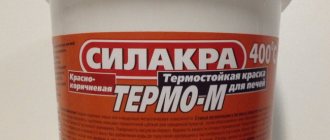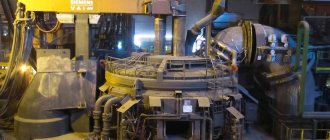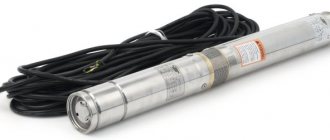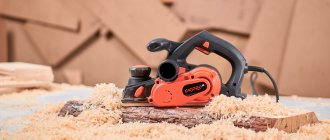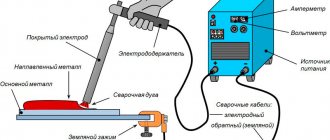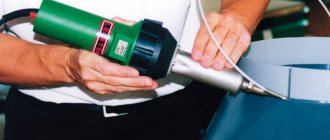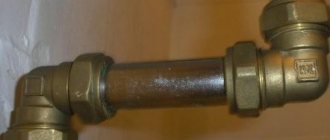Painting the stove with heat-resistant paint
For painting we used convenient aerosol cans. Shake the can for two to three minutes before applying. We begin painting with welds and hard-to-reach surfaces. We paint the metal surface with heat-resistant paint by cross-spraying at a distance of 25-30 centimeters. To paint the stove, two or three layers are needed. Allow the surface to dry to touch for 30 minutes between coats. We make the layers thin, it is important to avoid smudges or imperfections.
Characteristics
Metal stoves installed in bathhouses are constantly exposed to high temperatures and moisture. Modern stoves are made of stainless steel and structural steel. Even taking into account their advantages, metal surfaces must be covered with a protective layer. When choosing paint, you need to consider a number of requirements.
Heat resistance
When choosing coatings for metal furnace equipment, it is necessary to pay special attention to the heat resistance indicator. Manufacturers indicate the maximum temperatures at which the enamel retains its properties.
Corrosion protection
Paints for a metal stove in a bathhouse should not allow moisture to pass through so that rust does not appear underneath. In addition to this, preference should be given to enamels that can withstand prolonged exposure to not only high but also low temperatures. The oven is not used constantly. In winter, many people do not heat their bathhouses, which causes the premises to freeze.
Water repellent properties
When choosing enamel, it is better to choose moisture-resistant compounds. The humidity level in bath rooms is constantly increased. If you choose a regular coloring composition, it will quickly become unusable due to prolonged exposure to moisture.
Safety
Many types of paint release toxic substances when heated strongly. To maintain health, you need to choose paints and varnishes with valid certificates.
Decorating with patina
12 hours after applying the base layer, apply a heat-resistant patina to give a decorative effect. There are several patination techniques. The most popular is the so-called “dry brush”. Mix Patina thoroughly before use. Dip a flat brush into the paint. Rub the excess on the palette. With light movements we go over the most protruding areas of the oven, without completely covering the previous staining. After applying the patina, allow it to dry completely for a day.
How to prepare the oven
The reliability and durability of the protective coating depends on the quality of the surface to be painted.
- Preparing the stove for painting is carried out in the following order:
- remove soot, grease and other contaminants with water and detergents;
- we clean the stove from rust with hard metal brushes, a sandblaster, or a wire attachment on a drill or grinder;
- we remove small scratches and irregularities with fine sandpaper or a grinding machine, bringing the metal to a steel shine;
- remove the resulting abrasive and dust with a soft brush;
- degrease steel or cast iron surfaces with solvent, acetone or white spirit.
If the stove has stainless steel parts, in order to prevent paintwork from getting on them, first coat them with a layer of grease or other lubricant.
To protect the floor and walls from paint when painting, use masking tape, film or paper.
Varieties
Based on the maximum temperature that heat-resistant paint for stoves can withstand, the following types are distinguished:
- heat-resistant enamel for metal: the maximum temperature it can withstand is 80°C;
- acrylic and alkyd paint: its maximum is 100°C. It contains special pigments. After the enamel is applied to the surface, it does not turn yellow, its color does not fade or fade. Most often it is used to cover iron heaters in the bathhouse. This type is produced in the form of an aerosol, which is very convenient for coating;
- enamel made from epoxy, acrylic, polyurethane compounds with heat resistance up to 200°C;
- heat-resistant metal paint for furnaces with an ethyl silicate or epoxy ester base with metal powder, which tolerates high temperatures well - up to 400 ° C;
- silicone paint: zinc or aluminum powder is added to it: this type of coating can withstand temperatures up to 650°C. It is most often produced in the form of a spray.
Popular paint brands
Elcon heat-resistant enamel.
To paint a brick fireplace or stove in your home, you can use varnish from the Russian brand Elcon. With its help it is easy to give the stone a matte or semi-glossy look. The effect is determined by the number of layers applied. The varnish is available in aerosol cans. One is enough to treat 2 m² of surface. The coating dries in 3 hours; complete polymerization of the varnish requires 3 days while maintaining room temperature in the room.
Please note: Velvet effect paint creates the illusion of walls covered with textiles. Conveys the tenderness of fleecy fabric and depth.
Elcon heat-resistant paint is suitable for machine tinting. The black composition has the greatest heat resistance. It can withstand temperatures up to +1000 °C. Pigmentation of the paint material reduces its heat resistance characteristics. After tinting, the paints can be used at temperatures up to +600 °C. They can be used to coat ceramic surfaces, metal boilers and fireplace grates. Paint consumption is determined by the number of layers applied and the structure of the surface being treated.
Russian Cetra KO-85 varnish is available in cans. A 0.8 liter capacity is enough to cover 5 m² of surface in one layer. The varnish can withstand temperatures of +250 °C. Since the composition is made on the basis of solvents and synthetic resins, it has a pungent odor that disappears after heat-hardening the painted surface. When working with this varnish, it is necessary to ensure good ventilation of the room.
Secrets of painting a plastered stove
For plastered stoves and fireplaces, it is not necessary to buy heat-resistant enamels; you can take affordable water-based paint and apply it in several layers using a roller. To obtain the desired shade, heat-resistant pigments are added.
Using your own artistic abilities or ready-made stencils, it will not be difficult to decorate your home with beautiful patterns and paintings. The water-based emulsion dries instantly and has no odor, so repairs can be carried out even if you have to spend the night in the same room.
Decoration of a Russian stove
The cheapest paint for a Russian stove with a plastered surface consists of chalk and glue. To prepare it, dissolve 8 kilograms of chalk in 10 liters of water, stir the mixture well and add 100 grams of glue based on raw materials of animal origin (sold in arts and crafts stores) or wood glue diluted with water. To tint coated paint, you can use dyes that can withstand high temperatures.
As a rule, a home in need of renovation requires not only painting work, but also routine repairs. It is advisable to entrust the inspection of stove equipment and preventive repairs to professionals - this will extend the life of the stove and protect against accidents.
Why paint stoves and fireplaces?
A brick or plastered stove, as well as fireplaces, are treated with varnish or paint not only to preserve their visual appeal. The coating allows you to extend their service life and avoid aging of individual structural elements of heating devices.
Brickwork made from a material that is not uniform in color can be given an attractive appearance by coating it with heat-resistant paint. In this case, you can use several shades of the product at once. You can emphasize the attractiveness of finishing masonry by using colorless varnish. It gives brightness to ceramic materials.
It is advisable to paint a stone heating device in various cases:
- to protect the stove surface from household pollution, and things from traces of brick dust;
- to facilitate daily maintenance of the heating device;
- to bring the appearance of the stove in line with the overall interior design of the room.
Manufacturers
Currently, specialized stores have a very large selection of heat-resistant paints and varnishes, which are produced by different manufacturing companies. Products are represented by a wide range of both Russian and foreign production. We have already described the most popular types of paints suitable for brick and metal products. Now let's look at their characteristics.
Enamel KO-8101
The heat resistance of this paint ranges from 400 to 800°C. It is considered universal, because It can be coated on different surfaces: brick, metal, concrete.
Heat-resistant anti-corrosion enamel KO-8101
For metal products, experts advise purchasing the anti-corrosion compound KO-8101. Before coating, it is not necessary to carry out preparatory procedures. When heated, such paint does not form any harmful fumes, so it is considered an absolutely safe product. A very important advantage of this composition is the fact that you can work with it even at sub-zero temperatures. Such paints are characterized by high protection rates and a wide variety of colors, so everyone will find an option here to their liking. The manufacturer provides a guarantee for its products for a period of 15 years.
This type of paint is produced by many domestic and European companies, “Termika”, “Karst” and others.
All manufacturers use the same manufacturing technology. Only the color scheme may differ.
Solvents used to create paint are xylene and toluene.
The composition consumption for a three-layer surface coating is 120÷240 g/m². The drying period of the coating at a temperature of 150±2 °C is no more than half an hour, at 20±2 °C - no more than two hours. This enamel can be applied by spraying using a spray gun, or manually - with a roller or brush, in 2-3 layers, with each layer drying for 0.5 to 2 hours, depending on the ambient temperature.
Enamel KO-811
Heat-resistant enamel KO 811
This heat-resistant enamel is used for painting steel, cast iron, titanium surfaces, the heating temperature of which can reach 400°C. The paint looks like a suspension, which contains pigments dissolved in silicone varnish.
Usually KO-811 is sprayed. To do this, the enamel must be diluted with a stabilizer 100:6 for white paint and 100:7 for other colors. The mixing process takes place shortly before application.
The finished composition must be consumed within 24 hours.
The enamel coating must be well cleaned of dirt and grease. In order to rid the surface of all these traces, solvents are used.
The solvents used for this enamel are R-5A, toluene and xylene. The paint can be diluted: KO-811 by 30÷40%, KO-811K (white) by 70÷80%, other colors by 40÷50%. Enamel consumption varies from 100 to 250 g/m², depending on the color. The drying time of the painted surface at temperatures of 200, 150 and 20 degrees is no more than 2 hours. This heat-resistant paint is produced by Termika, NPF Emal LLC and other companies.
Enamel KO-168
KO-168 enamel with silicone varnish
This type of composition is intended for use at temperatures not exceeding 150°C. This means that this enamel can be used to cover brick products and metal parts that are located at a sufficient distance from the firebox. The functions of this enamel are not only protective, but also decorative. Manufacturers offer various colors of KO-168 enamel.
Subject to all operating requirements, such a composition will act as excellent protection for any material. This is due to the fact that such a coating is characterized by high moisture resistance and frost resistance. In addition, it is not afraid of exposure to ultraviolet rays, which means the enamel will retain its original shade for a long time.
KO-168 enamel is also a suspension containing pigments, fillers and additives mixed with silicone varnish. Paint consumption depends on the chosen color: for red and white enamel – 150 g/m²; for yellow – 180 g/m²; for blue – 140 g/m²; for brown, blue, light green, beige – 130 g/m²; for green – 120 g/m²; for black – 80 g/m².
KO-168 enamel is produced in ready-to-use form. If it is necessary to dilute it, toluene or xylene solvents are used. The drying time of enamel at a temperature of 20 ± 2 °C is about a day. If a metal surface is to be painted, it must be cleaned of various contaminants and degreased - also with xylene, solvent or acetone, and then the surface is wiped dry. Painting with this composition can be carried out at air temperatures from -30 to +40 degrees.
Heat-resistant paints "Tikkurila"
Heat-resistant paint Tikkurila Termal black
Tikkurila is a famous company from Finland, whose main specialization is the production of various paints and varnishes. The company's product range includes black and silver shades.
Silver enamel consists of varnish and aluminum powder. This mixture is designed to be heated up to 900°C; therefore, it can be used for painting metal surfaces. You can coat stoves that are located both in the house and on the property with this paint. This is due to the fact that Tikkurila paint tolerates environmental influences well.
Black paint is only suitable for surfaces heated to 400°C. The composition is applied by spraying or manually with a brush.
Enamel "Certa"
Certa heat-resistant enamel up to 700°C
Certa is a domestic manufacturer that produces heat-resistant paint for metal structures, since the composition is characterized by high anti-corrosion properties.
The paint well protects both individual parts of the structure and the entire product from moisture, overheating and aggressive influences. Temperature range - -60°С - +90°С. The composition, which is available in cans, is applied with a brush, and in aerosol cans it is sprayed.

